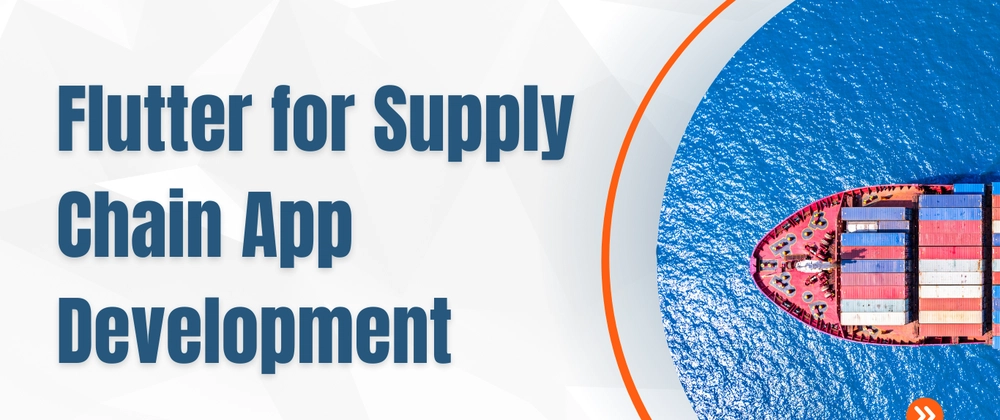Supply chain is one of the critical aspects of modern business operations. It ensures seamless coordination between suppliers, manufactures, warehouses, and customers. As the complexities in the logistics industry are increasing, organizations have to opt for innovative technology-driven solutions like cross-platform applications for optimizing operations, reducing costs, and improving efficiency of the supply chain. These applications can help in tracking the shipments, inventory management, workflow automation, and providing real-time insights into logistics operations.
Importance of Choosing the Right Technology
Selecting the right technology for developing a supply chain application is very crucial. The chosen framework must ensure performance, scalability, and seamless integration with various third-party tools. Additionally, it should be cost-effective, faster time-to-market, and should be able to provide consistent user experience across multiple platforms. One such framework is Flutter, it is an open-source UI toolkit that has emerged as an excellent choice for developing supply chain applications due to its flexibilities, cross-platform capabilities, and powerful performance.
What is Flutter?
Flutter is an open-source UI framework that is developed by Google and it enables natively compiled applications for mobile, web, and desktop from a single codebase. It uses the Dart programming language and provides a rich set of libraries which makes the UI development seamless and efficient.
Key Features and Advantages
The following are some of the key features and advantages of Flutter that you should know.
- Single Codebase: Develop once and deploy across Android, iOS, web, and desktop platforms.
- Fast Development: Hot reload feature enables instant updates without restarting the application.
- High Performance: Uses Dart’s AOT compilation for faster execution.
- Customizablt UI: It offers a vast range of widgets and smooth animations.
- Integration Capabilities: Easily connects with third-party services like Firebase, IoT, AI, and cloud storage.
- Strong Community Support: Backend by Google with a growing ecosystem of developers and resources.
Top Reasons to Choose Flutter for Supply Chain App Development
The following are some of the top reasons which you should consider while developing a supply chain application.
Cross-Platform Development
The organization in the supply chain industry might require mobile applications across multiple platforms and all should have consistent user experience across devices. By choosing Flutter for supply chain app development you will be able to write a single codebase that runs on Android, iOS, and web platforms which reduces the development time and cost significantly.
High Performance and Fast UI Rendering
The supply chain applications require real-time tracking and smooth user interactions. Therefore, by leveraging Flutter for supply chain app development you can avail the benefits of its Skia rendering engine which will ensure high frame rates and responsive UIs. As it complies directly to native ARM code, it delivers near-native performance, which is crucial for handling large data sets, maps, and dynamic content updates in logistics management.
Cost Effective and Faster Time-to-Market
The single codebase of Flutter helps to reduce the development cost and fastens time-to-market. Businesses can save on hiring separate teams for iOS and Android development, as a single team can handle both platforms. The hot reload feature allows Flutter developer to see changes instantly which accelerates the whole development process.
Seamless Interation with IoT, AI, and Cloud Services
The modern supply chain solutions rely on advanced technologies like IoT for tracking shipments, AI for demand forecasting, and cloud storage for data synchronization. Flutter for supply chain app development supports integration with these technologies through plugins and APIs which ensure smooth connectivity between various components of the supply chain.
Scalability for Large Scale Chain Applications
Whether you are a small business or a large enterprise, scalability is important. The Flutter’s modular architecture allows businesses to scale their applications as they grow. With support for REST APIs, WebSockets, and GraphQL, Flutter can handle extensive data exchange and real-time updates efficiently.
Real-World Examples
Many organizations have successfully utilized Flutter for supply chain app development. The following are two prominent examples of it.
Alibaba
Alibaba is one of the largest e-commerce services providers in the world. They leevraged Flutter to build their mobile applications. The benefits of leveraging Flutter are optimized performance with the help of skia rendering engine, improved user experience by providing consistent user experience, reduced cost of development with Flutter’s cross-platform capabilities and enhanced real-time tracking.
Google Ads
Google Ads is one of the most widely used advertising platforms which leverages Flutter to manage campaign tracking across multiple devices. By leveraging Flutter, Google Ads users can track campaigns across mobile and web devices, enhanced real time performance, increased developer productivity, and better scalability are some of the benefits of it.
Conclusion
Flutter for supply chain app development is an ideal choice due to its various benefits such as cross-platform nature, high-performance, cost-effectiveness, and seamless integration capabilities. Organizations can leverage Flutter to build scalable, feature-rich applications tailored to their requirements. But, it is recommended to partner with Flutter app development company to further streamline the development process and they will help you in ensuring high-quality and efficient supply chain solutions.



Top comments (0)